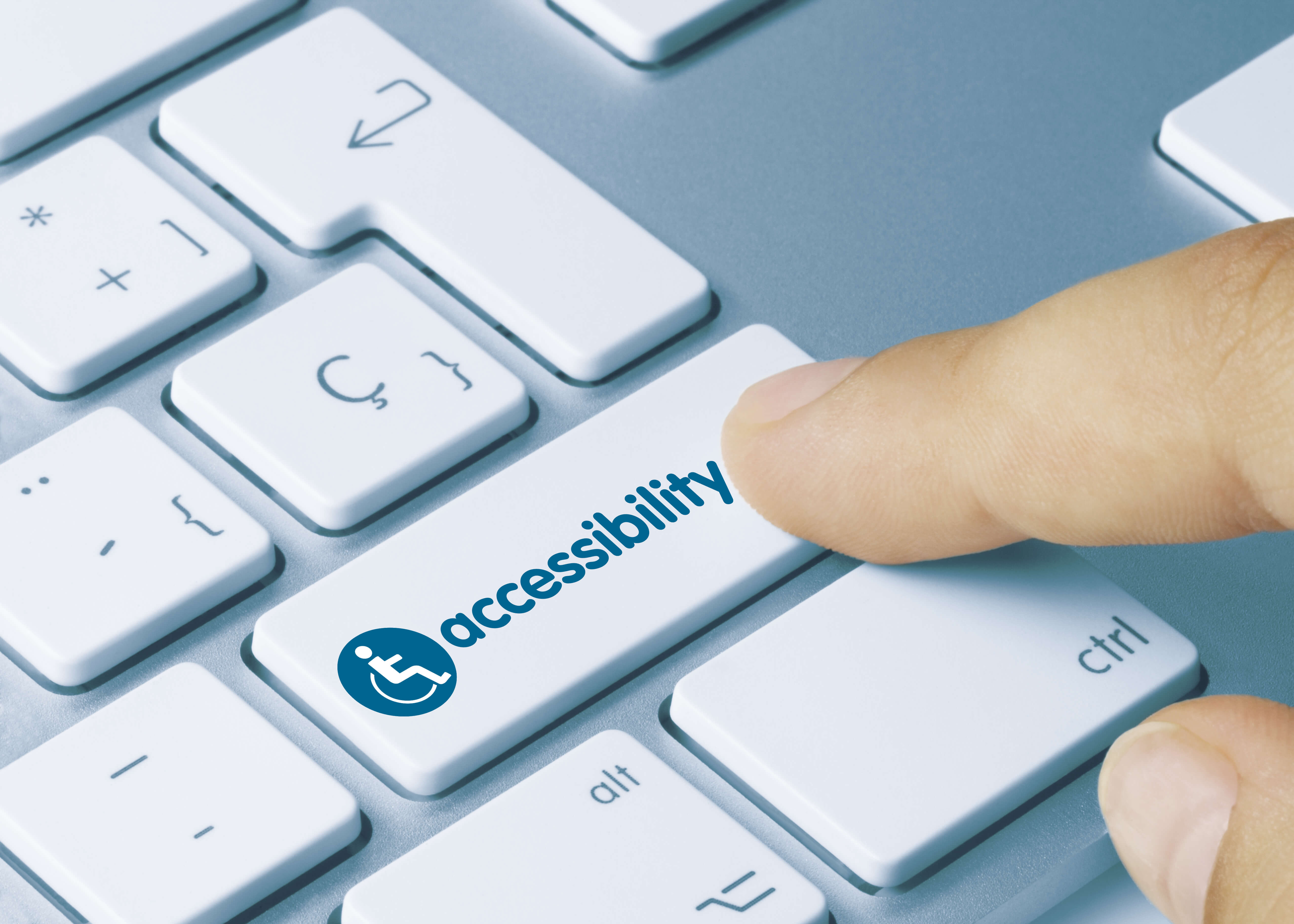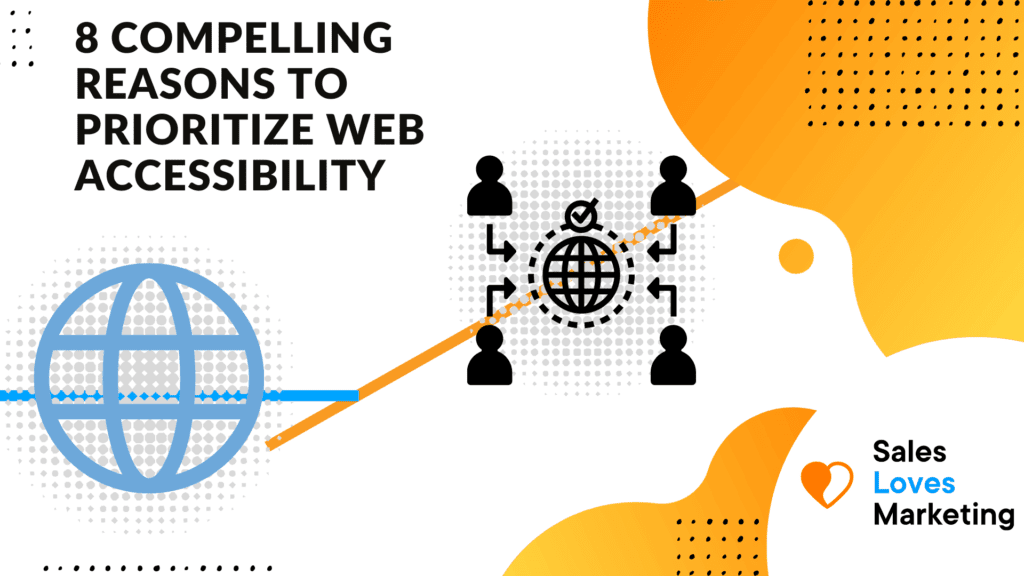Accessibility is an essential feature in a website because if you disregard this, then you’re effectively alienating certain demographics from accessing your services. Whether this happens unintentionally, none of them is an excuse for discrimination.
However, accessibility isn’t only about ability or disability. It’s reinforcing code and design practices that support all users in different circumstances. You may look at good contrast between the background and text as making a site more conducive to visually impaired persons and it also helps all users when in the sunlight. This and all other accessible design practices that create a better user experience for all users should be considered.
Why Web Accessibility?
Web accessibility is the process of designing and developing a website, so people living with various disabilities such as motor, neurological, cognitive, hearing, and visual impairments can be catered to. You may learn about web accessibility design in more detail as these compelling reasons show why you need to prioritize it:
.jpeg)
1. Website Accessibility Is An Ethical Practice
Imagine if there are no braille and other assistive learning technologies for the visually impaired or there are no wheelchair ramps on sidewalks. That’d simply mean some people would never get an education or cross the street unless assisted by others. While access to physical buildings and amenities has been widely embraced globally, digital access still has a long way to go.
Most businesses have websites that people with disabilities find impossible to use. If you intend to be inclusive, your site should let everyone in regardless of their impairments. By making your website accessible, you’re advocating for those who’d otherwise be excluded from accessing digital resources. Doing this ethical practice ensures you consider what’s best for your potential market by prioritizing their needs.
2. Increased Audience Reach
According to the Centers for Control and Disease Prevention (CDC) data, one in every four Americans lives with some type of disability. This is 26% of adult Americans encountering accessibility issues every time they need to access the web. By incorporating accessible design features, you boost your business reach and growth by making your online services available to all users.
An accessible website makes your products, services, and content reachable to a broader range of users, including those living with disabilities and circumstantial needs. This means when you opt not to build an accessible website, you lose touch with all these categories of users and you lose a large base of potential customers.
People living with disabilities have huge spending power, that’s why your business needs them as well. A survey conducted in the UK found that retail websites lost GBP£17.1 billion in 2019 because of accessibility barriers, so ignoring website accessibility isn’t only a bad web design practice but it’s detrimental to your business sales as well. Improving your website accessibility is a smart business move.
3. It’s Good For Search Engine Optimization (SEO)
Notably, the methods of improving web accessibility also improve SEO. The goal of web accessibility and SEO is similar in many ways. A website with cleaner codes, interfaces, and simple navigation benefits people with disabilities and improves your website’s bounce rate. The accessibility practices below also help with SEO:
- To ensure everyone can access video and audio files on the site, the Web Content Accessibility Guidelines (WCAG) and others require you to provide text equivalents.
- Search engines such as Google are essentially text-based as they can’t crawl through speech in video or audio formats. Using transcripts and closed captions makes your content more discoverable by search engines, which helps users find relevant content on your website.
Search engines are designed to crawl text to evaluate which websites contain content that should rank on top. Although the exact ranking criteria in search engines are unknown, accessible designs tend to rank higher due to their simplicity, better organization, and being easily understandable. This makes them SEO-friendly. Therefore, your website benefits you in two ways: providing users with a usable and accessible interface and ranking your site high on search engines.
4. Building Positive Public Relations (PR)
This is an era where consumers openly support brands that share their ideas, values, and beliefs. Many people would rather engage with brands taking a firm stand and supporting issues that matter. A business that doesn’t impress in word or action is likely to lose a good percentage of its customers and repel many other potential customers.
Web accessibility is among the courses that are close to people’s hearts. It’s not only for people living with a disability, but their loved ones, colleagues, and neighbors as well. By taking a firm stand and building an accessible web design, you’re doing a moral thing and you’re creating a positive brand image for your business.
Anyone living with a disability and interacting with your website is likely to leave a positive review and recommend your business to others. One of the best ways to start gaining positive PR for your brand is by having an accessibility statement for your website. State your commitment to create an accessible design and describe what you’ve done to comply with accessibility guidelines such as the Americans with Disabilities Act (ADA) and WCAG.
5. Shielding From Accessibility And Discrimination Lawsuits
Lack of an accessible website exposes your business to ADA, other accessibility laws, and discrimination lawsuits. As internet use, digital services, and technologies continuously become more prevalent, denying web access to people living with disabilities is seen as discriminatory.
Legislations on web accessibility require businesses to enable people living with disabilities to enjoy equal access to online content. Web accessibility lawsuits have been on the rise in the past. In 2018 alone, more than 2,000 lawsuits related to web accessibility were filed in the U.S.
If you want to avoid such legal action for discrimination and non-compliance with accessibility guidelines, this should be a reason enough to prioritize web accessibility. You can hire a web accessibility compliance consultant to audit your website, recommend changes, or issue you with a letter of reasonable accessibility.

6. It Improves Usability
Another feature that’s enhanced by an accessible website is usability. The whole purpose of accessible design is to create an environment, product, or service that’s more usable to people living with disabilities. Therefore, accessibility is more of an overlapping usability concept aiming to improve the ease of use and user experience.
For instance, the requirements in the WCAG accessibility guidelines are that websites should be navigable and usable with only a keyboard. This is for the sake of those people who may have challenges using a standard mouse. But that very aspect also benefits all the other users because to fulfill the requirement, the website’s navigational elements need to observe a strict hierarchy and be well-organized. This helps every other user to navigate the website seamlessly and locate content quickly.
7. Web Accessibility Is Achievable
With time and technology advancements, achieving an accessible website is now within reach for all. Previously, the process was more manual, laborious, and costly, which made it unaffordable for most people. Startups and small businesses couldn’t afford to make their sites accessible, which was unfair to them and their audience.
However, with more awareness and advanced technology such as machine learning (ML) and artificial intelligence (AI), accessibility is now achievable. From the ease of implementation, audit, and maintenance, the solutions are more advanced yet affordable. Also, web designers and developers can now use AI, ML, and computer vision technologies to give an enjoyable and comprehensive web experience to people living with disabilities.
8. Writing A Cleaner Code
Finally, websites created for accessibility have higher quality and cleaner codebase. This enables you to test for accessibility with online testing tools to identify errors that cause usability issues. A cleaner code benefits your website by making the user interface better, faster page loading, and fewer bugs. For this, building an accessible website is more like investing in a better codebase that’s better for your business’s future.
Look at these benefits of developing your website with a cleaner code:
- When developed correctly, a cleaner code is unlikely to break or fail to deliver as intended.
- It enhances website loading speeds, creating a smooth user experience.
- A code using the proper semantic structure and elements leads to better performance on search engines. The search engine needs to understand the information relationships to rank a page high.
- Structured and organized content is more predictable and intuitive, helping users navigate better through the website.
Final Thoughts: Accessibility Is An Investment
Looking at the reasons discussed above, the benefits you get from your accessible website are many. You enlarge your customer base, improve your brand reputation, improve bounce rates and the website’s SEO ranking, among others.
You also give all users an excellent experience with straightforward navigation and improved usability. All these things benefit your business. Also, it’s the moral thing to do, and you’ll be shielding your business from legal trouble and associated costs while maintaining your status as an inclusive brand. Consider the ideas mentioned here as you prioritize web accessibility.
